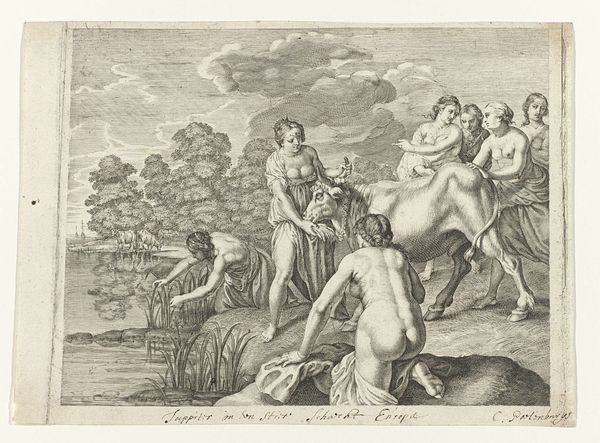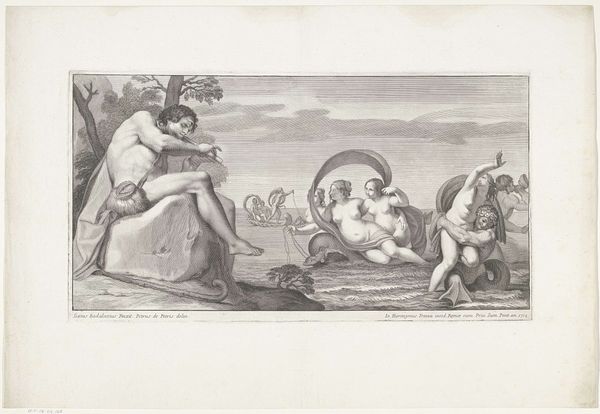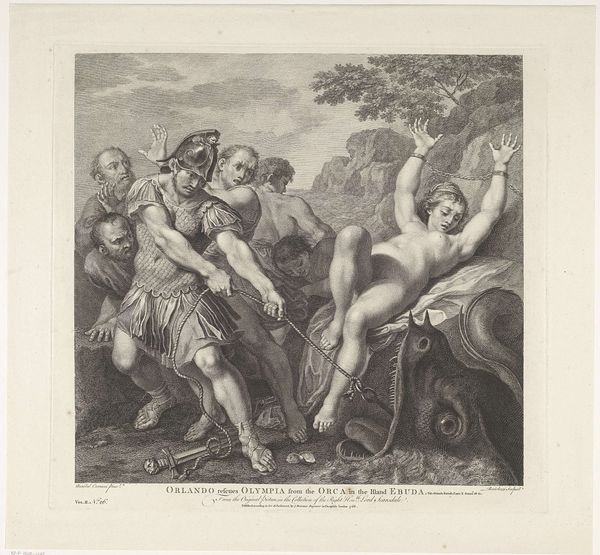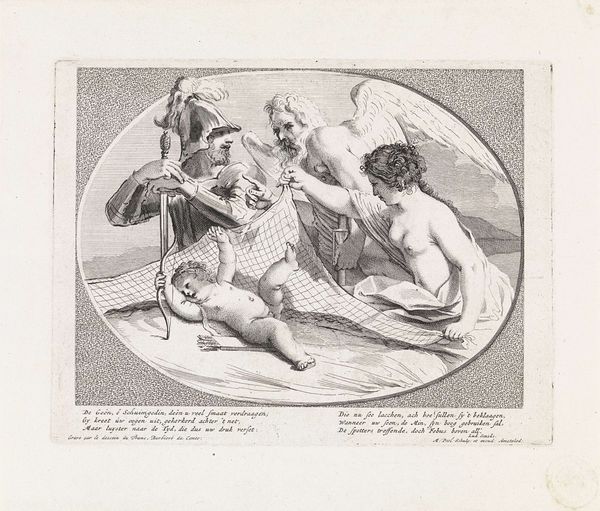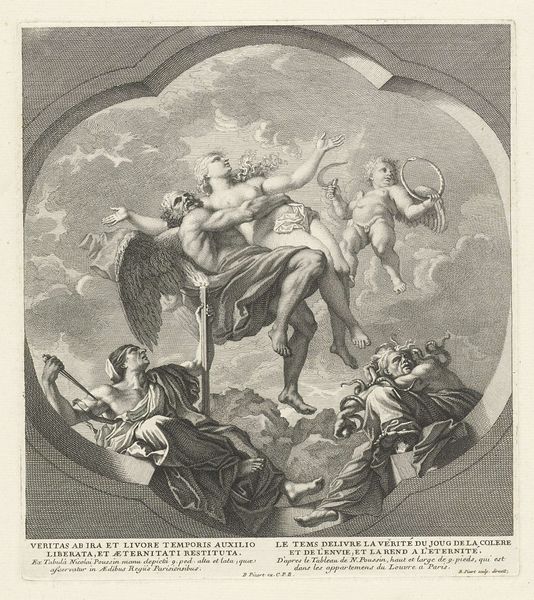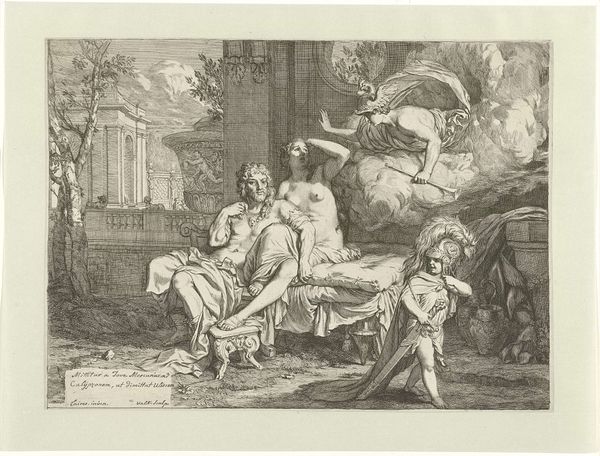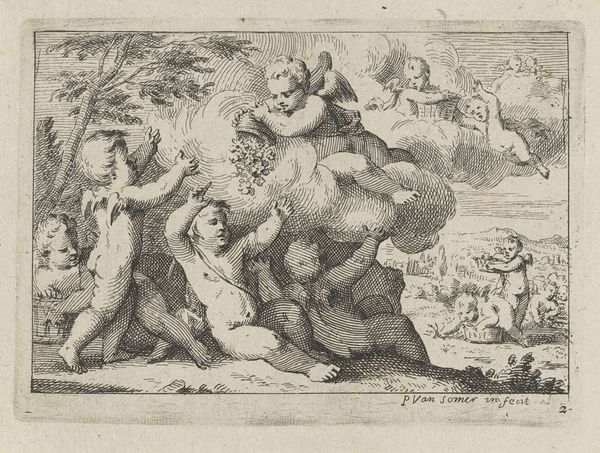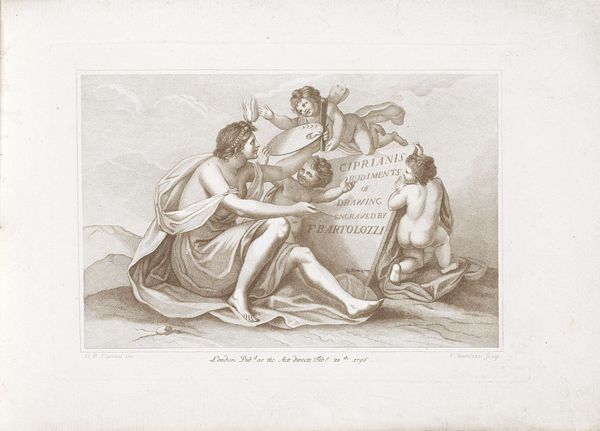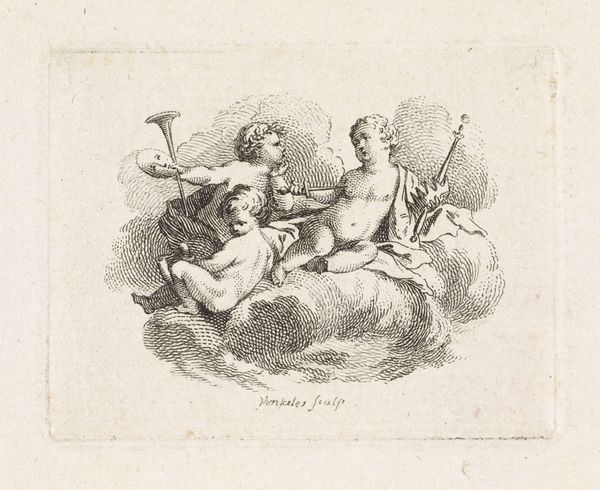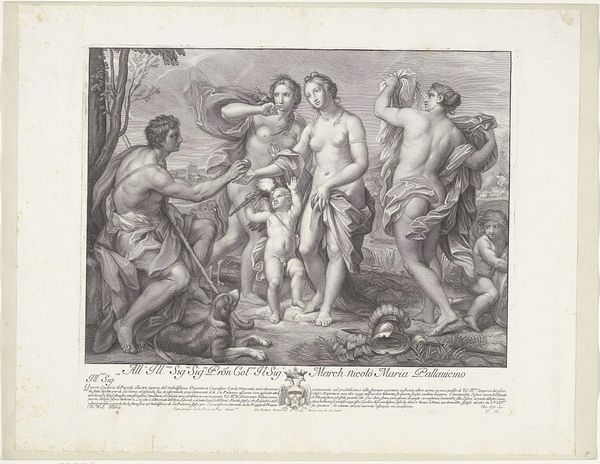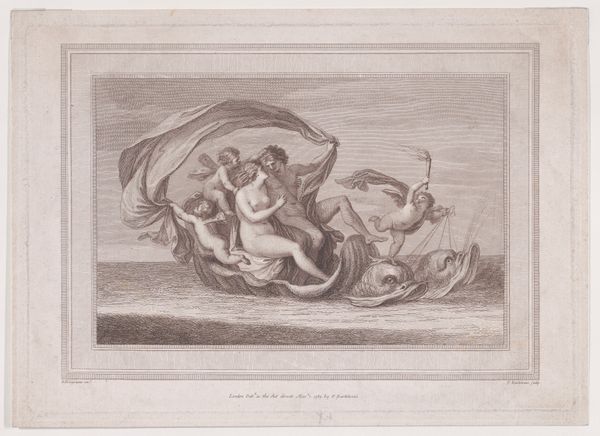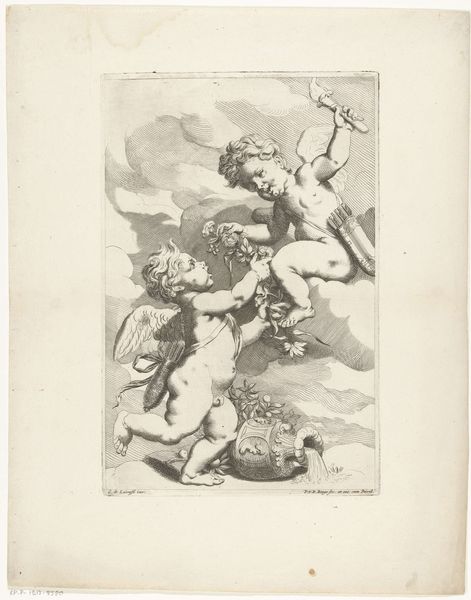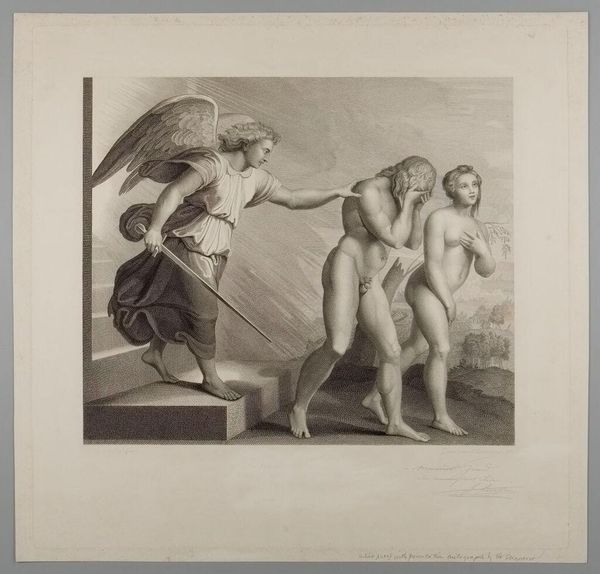
engraving
#
baroque
#
old engraving style
#
figuration
#
mythology
#
history-painting
#
italian-renaissance
#
nude
#
engraving
Dimensions: height 296 mm, width 550 mm
Copyright: Rijks Museum: Open Domain
Giovanni Girolamo Frezza made this engraving, Polyphemus gooit een steen naar Acis, in the late 17th or early 18th century. It depicts a scene from Ovid's Metamorphoses, where the cyclops Polyphemus, in a jealous rage, hurls a boulder at Acis and Galatea. This print reflects the enduring influence of classical literature and mythology on European art. The figures are rendered in a Neoclassical style, emphasizing idealised forms and dramatic poses. But what does this scene tell us about the cultural and institutional context of its time? Well, the depiction of the monstrous Polyphemus as a powerful, almost heroic figure can be interpreted as a reflection of the social hierarchies and power structures of the time. To gain a richer understanding of this engraving, we can consider the role of institutions like the French Academy in shaping artistic conventions and promoting certain ideals, as well as the social and political forces that influenced the reception of classical mythology in the Baroque period. In doing so, we can reflect on how art's meaning is contingent on social and institutional contexts.
Comments
No comments
Be the first to comment and join the conversation on the ultimate creative platform.
